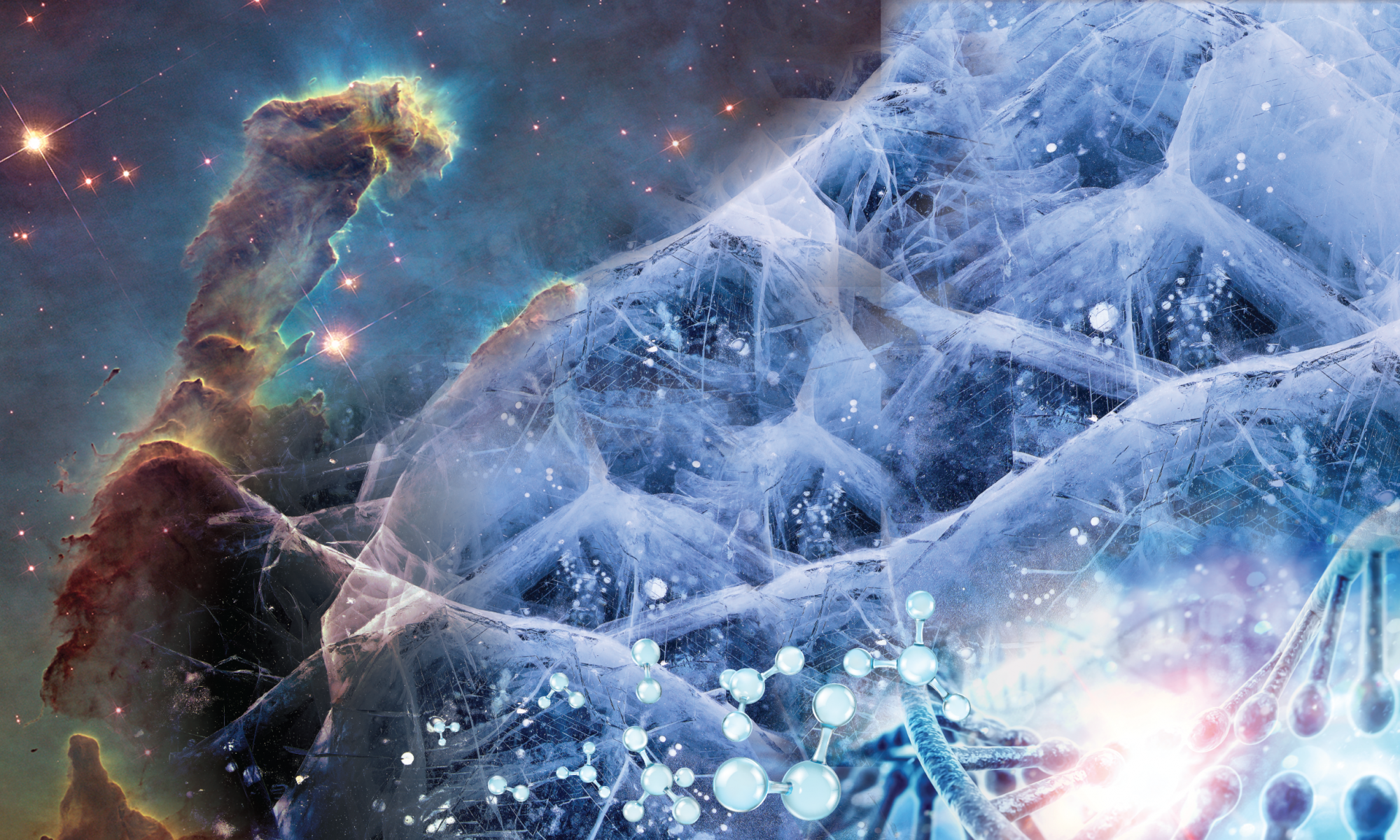As an Early Release Science Program, we provide several data products that will help the JWST observer community understand the available instruments and plan for future observing cycles. These products are described below.
1. Enhanced spectra and example column densities for our targets.
The first of our targets to have a completely observed spectrum are a pair of field stars located behind the densest region of the Chameleon I molecular cloud target field. These data are published in our first results paper, online in Nature Astronomy on January 23rd 2023 at 17:00 CET. The paper includes a complete set of abundances for the abundant ices species (like water and carbon dioxide) and several newly detected ice species, including the sulfur-bearing ice carbonyl sulfide. The NIRCam WFSS, NIRSpec FS, and MIRI LRS data used in the analysis of this paper are downloadable on Zenodo.
There are several additional components in the program for which we will provide enhanced spectra once the observations and data reduction are complete.
2. Best practices documentation
Once all of our data is observed and calibrated, we will compare and contrast the data quality for different instrument modes to establish whether it is possible to determine the CO2 ice column density using narrow band imaging with NIRCam, and whether the NIRCam WFSS is a good alternative to NIRSpec spectroscopy. These comparisons will form the basis for a best practices document for the JWST ice community. This SEP is expected later this year.
With our initial analysis of our first results, we have also contributed to the improvement of several observing modes, such as NIRCam WFSS and MIRI LRS. For NIRCam WFSS, we demonstrated the need for a new intermediate data product from the STScI pipeline, as a hook for teams who are developing their own sophisticated data extraction pipelines. We also demonstrated that the initial in-flight wavelength calibration for the MIRI LRS observing mode produced artifacts and worked with the MIRI instrument team to trigger studies of the problem, which resulted in an improved wavelength calibration.
3. Extensive laboratory ice database.
To analyze JWST ice spectra, we use template ice spectra generated in laboratories on Earth under fixed physical conditions (e.g. temperature, ice mixtures). As a deliverable to the community, Ice Age co-PI Harold Linnartz and member Will Rocha have collected spectra of simple and complex ices at range of temperatures online in the Leiden Ice Database for Astrochemistry (LIDA) with Interactive graphics interface (https://icedb.strw.leidenuniv.nl) as described in the paper Rocha et al. (2022) A&A, 668, 63. The online interface includes tools to simulate ice spectra for proposals during future JWST observing cycles.
Will Rocha has also developed a complementary tool, ENIIGMA, to derive abundances of individual ices in astronomical ice spectra using such laboratory data. ENIIGMA is described in the paper Rocha et al. (2021) A&A, 654, 158 and is publicly available on Github.
4. Chemical and physical models.
To compare with the measured ice abundances derived from tools like ENIIGMA, we also provide the community with chemical model predictions for the expected ice abundances in our target region under different physical and chemical assumptions. The first set of these predictions is published in Jin et al. (2022) ApJ, 935, 133 for a specific portion of the Chameleon I molecular cloud. We are producing additional models of other portions of this cloud, as well as models that can be extrapolated to external galaxies, in on-going work.
Team members Emmanuel Dartois and Jenny Noble have produced detailed physical models of the icy grains themselves, taking into account grain size and shape effects, as well as radiative transfer models set up to simulate ices in a dense core and in a protoplanetary disk, showing how the ice profiles change with the physical grain model and, importantly, the grain size. This work is available in the paper Dartois et al. (2022) A&A, 666, 153, and it has been used in our first results paper, McClure et al. (2023, Nature Astronomy, in press), to determine that grains in the Chameleon I cloud have grown to several microns in size.
5. Molecular cloud extinction curve
Ice and dust absorption and scattering in molecular clouds extinguishes the light from objects in or behind the cloud. Our NIRCam photometry and WFSS spectra, as well as the NIRSpec FS/MIRI LRS ice spectra, are uniquely suited to measure this extinction in the densest regions of the cloud. Once we have completed our analysis of these spectra, we will construct extinction curves for this molecular cloud for the community to use for the analysis of JWST results and for STScI to use in their exposure time calculator. This SEP is expected later this year.

